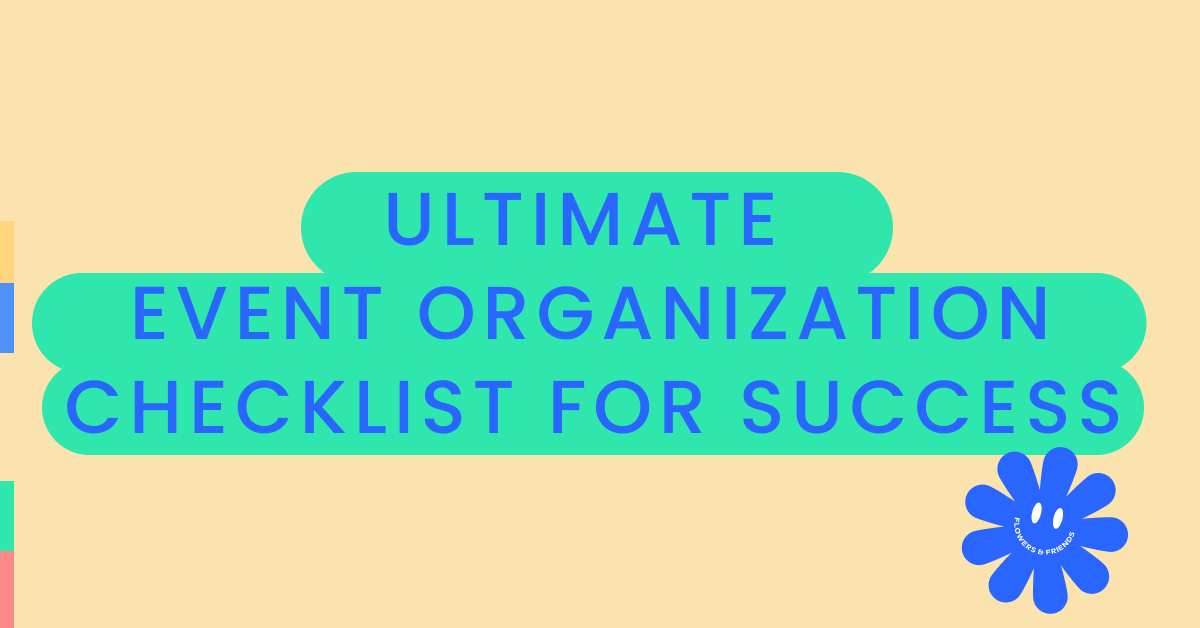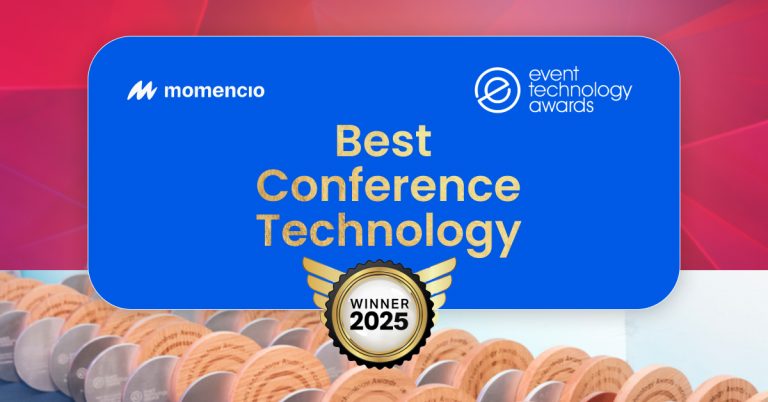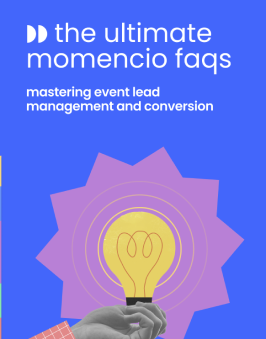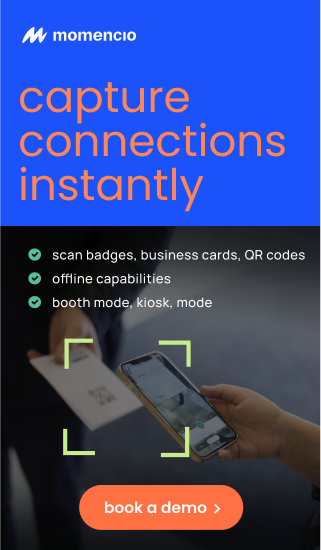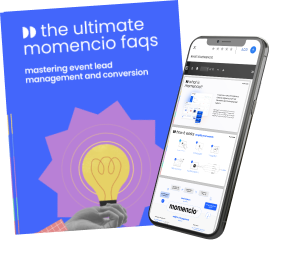Event planning is a complex endeavor that requires meticulous attention to detail. In a recent survey, 68% of event professionals reported that managing logistics was their biggest challenge. This is where an effective event organization checklist becomes a game-changer. By mapping out every task and deadline, it ensures smooth execution, minimizes last-minute crises, and helps align teams on a common goal.
Whether you’re orchestrating a corporate seminar, a large-scale trade show, or a hybrid conference, this guide will equip you with the tools to plan your event seamlessly. From pre-event essentials to day-of execution and post-event wrap-ups, you’ll gain insights into creating a comprehensive checklist tailored to your needs.
TL;DR: An event organization checklist is essential for ensuring smooth event execution, reducing errors, and enhancing team collaboration. The checklist should cover all phases of planning:
Understanding the role of checklists in event planning
Checklists are more than just to-do lists—they are the foundation of successful event execution. They provide clarity, streamline processes, and help teams stay organized. A recent study found that event teams using structured checklists were 30% more likely to meet their event goals.
For instance, a checklist ensures all stakeholders have visibility into their responsibilities, preventing oversights. Tasks like securing permits, confirming vendors, and finalizing attendee materials can easily fall through the cracks without a detailed plan. With a checklist in place, every step is accounted for, reducing stress and improving efficiency.
One key advantage is adaptability. Events often face unexpected changes, such as last-minute cancellations or weather disruptions. A robust checklist serves as a flexible roadmap, allowing planners to reprioritize tasks quickly.
Digital tools like Google Sheets, Trello, or Monday can further enhance the effectiveness of your checklist by enabling real-time collaboration. Teams can assign tasks, set deadlines, and track progress seamlessly, ensuring nothing gets overlooked.
Skipping a checklist can lead to chaos, missed deadlines, and dissatisfied attendees. By prioritizing this essential tool, you lay the groundwork for an organized, stress-free planning process.
A step-by-step guide to creating an effective event organization checklist
Creating a tailored event organization checklist involves breaking the planning process into manageable phases: pre-event, day-of-event, and post-event. Each phase addresses specific needs and tasks, ensuring every detail is covered.

Pre-event checklist:
- Define objectives: Identify goals like lead generation, attendee engagement, or brand awareness.
- Venue and vendor selection: Research options, negotiate contracts, and finalize bookings early.
- Permits and compliance: Ensure all permits and insurance requirements are met.
- Budget allocation: Create a budget that includes contingencies for unexpected expenses.
- Marketing materials: Develop a promotion plan, including email campaigns and social media outreach.
- Technology setup: Test registration platforms, mobile apps, and other tech solutions.
Day-of-event checklist:
- Logistics setup: Verify that vendors arrive on schedule and the venue is set up as planned.
- Registration and attendee experience: Ensure check-in processes are smooth and welcoming.
- Tech troubleshooting: Have an on-site tech support team for AV issues or app glitches.
- Event flow monitoring: Assign team members to oversee specific zones, ensuring everything runs on time.
Post-event checklist:
- Data and feedback collection: Compile insights from surveys, polls, and analytics platforms.
- Thank-you communications: Send follow-up emails to attendees, sponsors, and speakers.
- Debrief with stakeholders: Meet to review successes, challenges, and improvements.
- ROI analysis: Compare event outcomes against goals and prepare a comprehensive report.
Each checklist should be customized based on the event type and scale, with room for adjustments as new priorities emerge.
Pre-event essentials to consider
The pre-event stage is where the foundation for success is laid. It involves everything from aligning your team to setting measurable objectives. Without this groundwork, execution becomes chaotic and disorganized.
Start by selecting the right venue. Consider factors such as capacity, accessibility, and amenities. For example, if hosting a hybrid event, ensure the venue has reliable internet connectivity and suitable spaces for streaming.
Next, focus on assembling the right team. Assign clear roles for marketing, logistics, and on-site operations to avoid overlap or gaps in responsibilities. Using digital collaboration tools can help streamline communication and keep everyone on track.
Budget planning is equally critical. Allocate funds for high-priority items like catering, speakers, and promotional materials, but leave room for contingencies. According to a report by Event Manager Blog, unforeseen expenses account for 15% of an event’s total budget on average.
Finally, test your technology. Whether it’s a virtual platform, badge scanner, or mobile app, run multiple tests to ensure seamless integration. A successful pre-event phase sets the stage for a memorable experience.
Day-of-event checklist: Keeping everything on track
The day of the event is the moment of truth when months of planning come to life. A detailed day-of-event checklist ensures smooth operations and helps you address issues proactively.
Start with setup and logistics
Begin early by confirming that all vendors and suppliers arrive as scheduled. Verify that equipment, signage, and seating arrangements align with your pre-approved layout. Walk through the venue to check for potential problems, such as poor lighting, malfunctioning AV systems, or misplaced materials.
Assign a team member to oversee specific areas, such as registration, catering, and breakout sessions. Clear delegation ensures no aspect of the event is neglected. For example, while one person monitors the stage area, another can assist with attendee registration.
Streamline attendee experience
The first impression matters. Ensure the registration desk is efficient and welcoming. Have printed schedules or digital kiosks readily available to guide attendees. Staff members should be trained to answer common questions and provide directions.
Integrating technology can further enhance the experience. Tools like badge scanners or mobile apps allow seamless check-ins and provide real-time attendance tracking. Incorporating interactive elements, such as gamified activities or live polling, can also boost attendee engagement.
Prepare for troubleshooting
Despite meticulous planning, unexpected issues can arise. Equip your team with a troubleshooting guide addressing potential scenarios, such as AV failures or late-arriving speakers. Keep essential contacts—such as vendors, tech support, and venue managers—on speed dial.
Having a backup plan is non-negotiable. For instance, if an outdoor event faces rain, an alternative indoor setup should be ready to go. Similarly, extra supplies like chargers, extension cords, and first-aid kits should be accessible.
Monitor the flow of the event
Keep a close eye on the schedule. Assign someone to track time and provide cues to speakers or performers to ensure everything runs smoothly. Use communication tools like walkie-talkies or group chats to maintain real-time coordination among your team.
A well-prepared day-of-event checklist guarantees that even unforeseen challenges don’t derail the success of your event.
Post-event checklist: Wrapping up for success
Once the event concludes, the work doesn’t stop. The post-event phase is crucial for measuring success, building relationships, and laying the groundwork for future events.
Data collection and analysis
Gather feedback from attendees, speakers, and sponsors through surveys or polls. Tools like Google Forms or event-specific platforms can make this process efficient. Analyze key metrics such as attendance rates, social media engagement, and lead conversion rates to gauge the event’s performance.
Thank-you communications
Personalized follow-ups are vital for nurturing relationships. Send thank-you emails to attendees, acknowledging their participation. For sponsors and speakers, include specific details about their contributions and their impact on the event.
Debriefing with stakeholders
Host a post-event meeting with your team to discuss successes, challenges, and areas for improvement. Capture insights on what worked and what didn’t, using them to refine your planning process for future events.
ROI analysis
Evaluate the event’s return on investment by comparing costs against achieved goals. For instance, calculate the number of qualified leads generated or brand impressions made. Visual tools like dashboards can help present this data effectively to stakeholders.
Archiving and documentation
Organize all event-related materials, such as contracts, attendee lists, and media files, into a centralized system for easy access. This archive can serve as a reference for planning future events.
A comprehensive post-event checklist ensures your efforts translate into actionable insights, better relationships, and enhanced strategies for upcoming events.
Pro tips for maximizing your event planning efficiency
- Leverage technology: Utilize event management platforms like Cvent or Bizzabo to centralize tasks, streamline registrations, and track real-time analytics.
- Collaborate with stakeholders: Maintain open communication with sponsors, vendors, and team members. Regular check-ins and status updates minimize miscommunication.
- Automate repetitive tasks: Tools like email marketing automation and data syncing with CRM systems save time and reduce manual effort.
Incorporating these strategies into your event planning process can boost efficiency and improve outcomes.
Conclusion
An event organization checklist is an indispensable tool for seamless planning and execution. From pre-event preparation to post-event analysis, each phase benefits from a structured approach, ensuring nothing is overlooked. By leveraging technology and staying adaptable, you can deliver memorable events that align with your goals.
For professionals looking to take their event management to the next level, tools like momencio can help streamline processes, enhance attendee engagement, and maximize ROI. Explore momencio to revolutionize your event planning strategy.
FAQs
- Why is an event organization checklist crucial for success?
- An event organization checklist ensures no detail is overlooked, providing a clear roadmap from planning to execution. It minimizes the risk of errors, improves team collaboration, and ensures tasks are completed on time, leading to a seamless event experience.
- How do I prioritize tasks in my event checklist?
- Start by identifying critical tasks tied to the event’s success, such as securing a venue and booking speakers. Categorize tasks by priority (high, medium, low) and assign deadlines to ensure timely completion.
- What should be included in an event budget checklist?
- Key components include venue costs, catering, marketing materials, AV equipment, speaker fees, permits, travel expenses, contingency funds, and post-event activities like thank-you campaigns.
- How can I manage last-minute changes effectively?
- Last-minute changes are inevitable in event planning. Prepare by including contingency plans in your checklist. For example, have backup vendors, additional supplies, and a detailed communication plan to notify the team quickly.
- How do I handle vendor coordination on the event day?
- Assign a team member as the primary contact for each vendor. Use a shared communication tool or a WhatsApp group for real-time updates. Conduct a walkthrough of the venue with vendors a day before the event to confirm logistics.
- What’s the best way to streamline attendee registration?
- Utilize digital tools like online registration platforms, mobile apps, or badge scanning systems. Ensure you have a backup registration method in case of tech failures.
- How can I ensure effective communication among the event team?
- Hold regular check-ins during the planning phase. On the event day, use walkie-talkies or communication apps like Slack or Microsoft Teams for real-time coordination. A centralized hub for documents ensures everyone is aligned.
- How can I enhance attendee engagement during the event?
- Incorporate interactive elements such as live polls, Q&A sessions, and gamification. Use personalized experiences like attendee-specific content or networking opportunities tailored to their interests.
- How do I measure the success of my event?
- Evaluate metrics like attendance rates, social media engagement, lead generation, and ROI. Use post-event surveys to gather qualitative feedback and analytics tools to assess quantitative performance.
- How do I effectively follow up after the event?
- Send personalized thank-you emails to attendees, sponsors, and speakers. Share highlights or recap videos. For leads, use CRM tools to segment and nurture them with tailored content.
- What tools can I use to manage my event checklist?
- Popular tools include Asana, Trello, and Monday.com. These tools offer features like task assignment, deadline tracking, and real-time updates.
- What should I include in a virtual event checklist?
- Focus on platform selection, tech testing, digital marketing campaigns, speaker onboarding, audience engagement strategies, and post-event analytics. Ensure you have a support team to troubleshoot issues during the event.
- How far in advance should I start creating an event checklist?
- Ideally, start planning 6–12 months before the event, depending on its scale. For smaller events, a 3–6 month timeline may suffice. Early planning ensures better vendor availability and allows for adjustments.
- How do I ensure inclusivity in my event planning?
- Include accessibility considerations like wheelchair-friendly venues, sign language interpreters, or captioning for virtual sessions. Accommodate dietary restrictions and provide gender-neutral facilities if needed.
- How do I incorporate sustainability into my event checklist?
- Use eco-friendly materials for decor, minimize single-use plastics, and encourage digital tickets over printed ones. Partner with vendors who prioritize sustainability and consider post-event recycling programs.
- How do I handle multiple events simultaneously?
- Use project management tools to create separate checklists for each event. Delegate responsibilities and designate a team lead for each project to ensure smooth execution.
- What are the most common mistakes to avoid in event planning?
- Skipping a timeline, failing to test technology, underestimating the budget, neglecting attendee communication, and ignoring contingency planning are common pitfalls that can derail an event.
- How can I ensure my event reflects my brand identity?
- Maintain consistent branding across materials like signage, digital platforms, and promotional content. Train staff to communicate your brand values effectively.
- What is the role of technology in modern event planning?
- Technology streamlines operations, enhances attendee engagement, and provides real-time data for decision-making. It simplifies processes like registration, lead tracking, and post-event analysis.
- How do I stay updated on the latest trends in event planning?
- Follow industry blogs, attend webinars, and participate in networking events. Subscribing to event management newsletters or joining associations like MPI (Meeting Professionals International) can also help.
